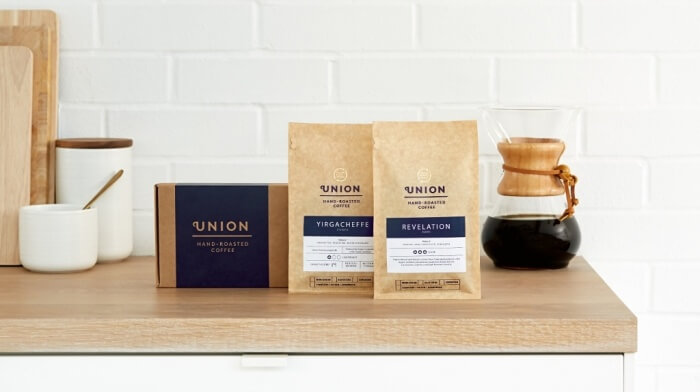Jeremy Torz thinks people should drink premium coffee over instant, because it's better and costs less than you think. But with four in five coffee drinkers currently disagreeing, he must prove his theory fast.
How To Change Customer Behaviour When You Know You're Right
Jeremy Torz thinks people should drink premium coffee over instant, because it's better and costs less than you think. But with four in five coffee drinkers currently disagreeing, he must prove his theory fast.

While fresh and speciality coffee has become the norm in coffee shops recently, 80% [1] of us still buy instant for the home. This is a statistic we are looking to change with our new subscription service called CoffeeClub that makes exploring the world of high-quality coffee, and having it delivered directly to the home a great deal more accessible.
Doing this presents us with a significant challenge: we need to persuade the majority of our target market that high-quality “real” coffee is not only more enjoyable than instant, but that it is much easier and more affordable than many realise.
Achieving this would mean attempting to change the preferences of millions of people, and while we don’t expect to achieve this on our own, we do want to continue to be at the forefront of taking the craft coffee revolution into the mainstream.
Fortunately we have some experience in the area of behaviour change. When we launched Union Coffee 15 years ago we decided to put sustainability at the heart of what we do, pioneering our business model – Union Direct Trade.
With our influence, direct trade is fast becoming the preferred method for sourcing premium coffee and we are proud to continually be at the cutting-edge of a movement that yields higher-quality coffee and a significantly better deal for producers.
The prospect of launching CoffeeClub got us thinking: what are the absolute must-dos if you are trying to change behaviour en masse? Here’s what we came up with:
1. Understanding that there’s no such thing as “the” consumer. It’d be easy for us to over generalise when talking about “coffee drinkers”, which is why market segmentation is so important.
When trying to make widespread changes, it’s vital not to forget that your proposition needs to work on multiple levels and that what intrigues or persuades one individual may be ineffectual to another. By segmenting your market you make speaking to individuals more personal and more compelling.
2. Influence the influencers. With an endorsement from the right person, things can change extremely quickly. This can take some time but deciding who your market listens to is a good start, while bearing in mind that it’s probably lots of people, especially if you have segmented.
Once you’ve identified, there’s no harm in engaging via email or mentioning them in social media posts – not to simply ask for their help – but to start professional relationships built on trust. Getting influencers on your side isn’t easy, and it might not be right for every business, but when it works, the effect can be profound in changing lots of opinions at once.
3. Create a community. Large or small your business exists in a community and cultivating this is fundamental to changing opinion. Perhaps the easiest way of doing this is connecting (either digitally or face-to-face) with your core audience – people who are already on your side.
With some encouragement these people can become enthusiastic and vocal brand ambassadors for you, spreading the word far and wide. This is particularly valuable in the digital age. Emailed newsletters or social media are great for this, but in our view nothing beats meeting people face-to-face. That’s why we host so many events at our roastery to hear first-hand what our customers have to say.
4. Empower through knowledge. Some people are unwilling to change their habits out of fear of the unknown, or due to long-standing beliefs. But using your community and any marketing channels, you can look to slowly educate people on the truth.
At Union, for example, we’ve produced a few videos demystifying different aspects of great coffee, as well as “how-to” videos on a range of subjects. On its own it may not change the status quo, but it may well convince a sceptical visitor to take the plunge and try something new.
5. Make it easy. Be absolutely clear not just about why you want things to change, but why it’s better if things change – communicate this at all times! If you want people to try a new product or service for example, ensure that it’s accessible on your website or in store and make sure it’s accompanied by lots of practical information. If people are already trying to climb over their psychological objections, give them as much of a leg-up as you can.
6. Tortoise (usually) trumps hare. There is every chance that your plan to change consumer behaviour will take root overnight, creating near-instant change. But in our experience, it usually takes rather longer to build sustainable and far-reaching change.
That’s why it’s important not to lose heart, and to continue innovating and trying new things. It’s perhaps even more important that you stick to your principles and to the innate qualities of your product or service.
You can find a great list of coffee shops compiled by The Darkest Roast.
[1] Research of 1,072 coffee drinkers conducted by Censuswide of Union Hand-Roasted Coffee, October 2015
Thanks for signing up to Minutehack alerts.
Brilliant editorials heading your way soon.
Okay, Thanks!




